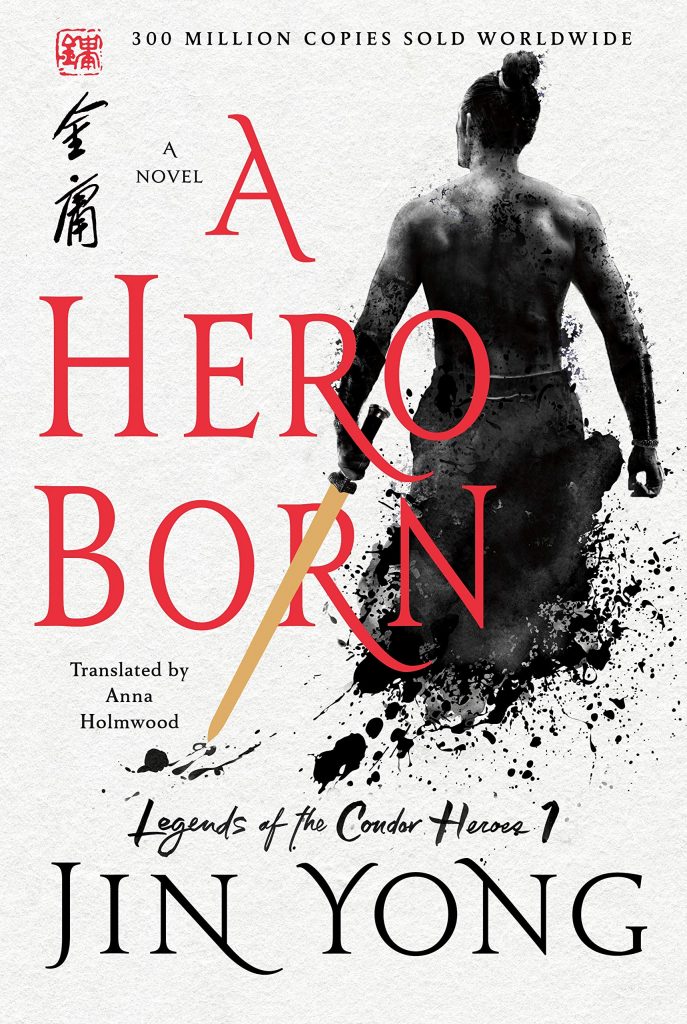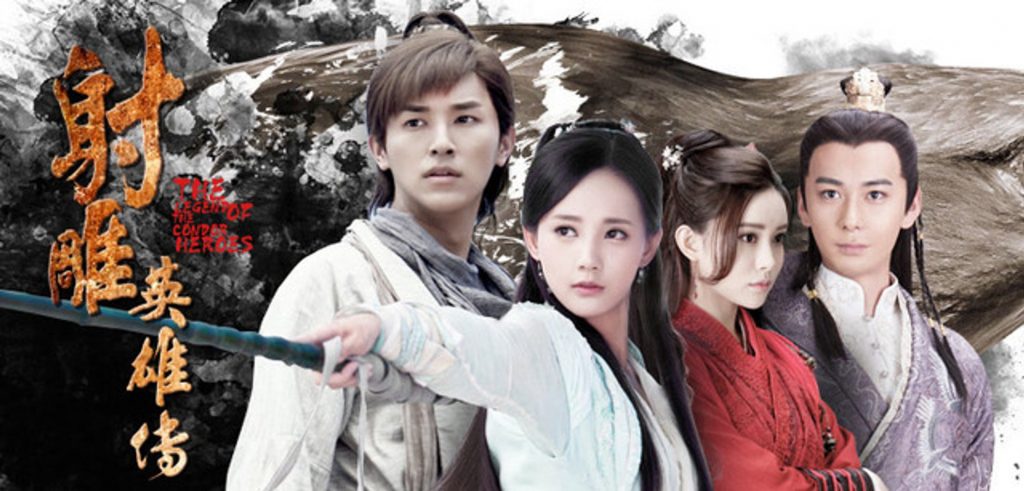
So I recently read the first two parts of the Legends of the Condor Heroes novel, which are considered the Chinese equivalent of Lord of the Rings. Written in Chinese by the writer Louis Cha under the pen-name Jin Yong in the 1950s, this cycle of four novels is wuxia perfection, mashing up historical figures and events with figures of myth and legend. The translations are by Anna Holmwood, a Swedish translator with impeccable credentials, an M Phil in Modern Chinese Studies and a BA in history from Oxford University. Even though she gets flak from OG fans for the anglicized translations, specifically her choice of names, the English versions capture the spirit of the milieu without teetering into footnote hell.
But indeed, you have to maintain a balance between provoking a reader’s interest and losing them completely due to incomprehensibility….the detail, the elements of Chinese medicine or historical references that are perfectly obvious to a Chinese reader. And yet, it is my opinion that an English reader doesn’t need to understand everything on the same level as his/her Chinese counterpart. I would rather that a translation inspires a reader to explore something further than sacrifices the energy and flow in order to make every detail plain.
https://caroltranslation.com/2018/04/03/greatest-women-in-translation-anna-holmwood/
Legend is being published as four parts, out of which two are already out early this year. It is the first of three volumes. The next book is Return of the Condor Heroes, where the two play a subordinate role to the next generation of heroes, followed by Heaven Sword and Dragon Saber, which goes one generation further. Holmwood and fellow translator Gigi Chang have been releasing one book every year, since 2018, and since every book has sub-volumes, we are looking at a decade more at least before the series is complete.
Legend of the Condor Heroes deals with the story of every-man hero Guo Jing and his fated duel with his brother-from-another-mother, Yang Kang, and the twists and turns of fate that lead various characters’ journeys to intersect. In the 13th century, where the story is set, friends become foes and vice versa; misunderstandings lead to decade-long rivalries; oaths of vengeance are sworn and kept; both justice and redemption go hand in hand. And through all this, there is the thread of otherworldly kung-fu disciplines that ties characters together. In Holmwood’s own words, from her introduction to the first book:
You are about to begin a journey that will span the lengths of the Chinese Empire and beyond, traverse centuries, witness dynasties rise and fall in brutal wars and deceitful invasions, brave men fight and die for their homeland and traitors exchange honor for personal gain. You will meet young men and women with remarkable kung fu skills, you will encounter gruff men who, despite appearances, always respect the code of honor that governs the martial arts world. You will be amazed by semi-celestial animals, magic medicinal concoctions and poison-tipped weapons. You will come face to face with princes who manipulate and mothers who are easily manipulated, men whose love is undying and women whose hearts never err.
Yes, in case you didn’t realize, I am besotted with the books, the immense cast of colorful characters, the heavily involved subplots, and the universal moral themes that the martial masters both embody and defend. I will freely admit to being enthralled by the multi-page action sequences, the magical ebb and flow of words on paper that bring to life one-on-one duels, both physical and supernatural. One such conflict, between two martial arts stalwarts that are evenly matched, is fought with musical instruments – a flute and a zither.
The iron zither was the call of monkeys and apes in a remote mountain range, the hoot of owls in a dark wood. The jade flute was songs under the spring sun, whispers in a maiden’s chamber. Fierce grief against the softly sensual. When one tune rose in pitch, the other descended. When one reached a crescendo, the other fell all but silent. Neither succeeded in dominating the other.
By the time I was on the second book, the momentum of the story overpowered the sheer volume of information being thrown at me. Here a character suddenly makes an appearance, and then turns out to be related to another from the middle of the first book. We meet another personage and realize that they have tangentially been connected to the proceedings for quite a while. And of course, it helps that every new character has a personality that crackles and pops on the page. A favorite is Hong Qigong, chief of the Beggars’ Sect, who refuses to take on disciples, but is coerced by the wily Lotus Huang into teaching Guo Jing the formidable Eighteen Dragon Subduing Palms technique. How does she do so? Why, by cooking a steady course of epicurean delicacies for the gourmand. And Miss Holmwood’s translation does more than justice to the proceedings.
The beggar’s chopsticks got straight to work on what Guo Jing thought looked like pan-fried beef strips. But Count Seven knew it was something much more complex than that, as new flavours and sensations unveiled themselves with every bite. One moment smooth, another moment crunchy – it was impossible to predict the next taste or texture. It was as if his tongue was sparring with a martial master. He examined the dish. Each strip was made up of five different layers! “I can taste shank of lamb, ear of piglet, veal kidney and . . .” The beggar closed his eyes as he savoured each mouthful. “I’ll bow to you if you can identify the others!” Lotus grinned. “Rabbit saddle . . . and . . . thigh of water deer!” “Amazing!” She clapped and cheered. Guo Jing could not believe how much effort she had put into each tiny strip. He was also full of admiration for Count Seven Hong for being able to distinguish the five ingredients. “Pork and lamb bring out one flavour, water deer and veal another,” Hong mused. “I can’t work out how many there are in this dish alone.” “Twenty-five, if we ignore the variations you get from layering the meats in different sequences.” Lotus smiled. “This dish is called Who Hears the Plum Blossom Fall While the Flute Plays? Five kinds of meat, the same as the number of petals on a plum blossom, and the strip is shaped like the dizi flute. It is meant to be a test of your palate, and your tongue affords you the title of Top Scholar.” Count Seven Hong moved on to the other bowl. “This broth is too precious to be devoured.” He scooped up a few cherries, tasted them and – ah! – gasped with delight. Refreshing lotus leaf, delicate bamboo shoot, honeyed cherry – their flavours are unmistakeable, Count Seven thought, as he helped himself to a few more cherries. He chewed with his eyes closed. What is the fruit stuffed with? It tastes meaty. Fowl. It has to be . . . “Partridge?” he said out loud. “No . . . spotted dove!”
Of course, it is also the translation choices that fascinate me. Even the act of translating the characters’ names posed a challenge to Holmwood and Gigi Chang, her colleague.
For example, in the case of heroine Lotus Huang’s kung fu master father, his six disciples are named after feng, or “wind” in Chinese. In Chang’s version, they are called Hurricane Chen, Cyclone Mei, Tempest Qu, Zephyr Lu, Galeforce Wu and Doldrum Feng.
http://global.chinadaily.com.cn/a/201904/19/WS5cb91987a3104842260b70d3_1.html
How popular is this series? So popular that there has been adaptations left, right, and center since the books came out. So far, I know of 9 TV shows based on the first book alone, released at the rate of one every decade. I tried watching the 2008 version that’s on Prime Video, and was turned off in the first twenty minutes. Both the bad streaming quality and the dated quality of the show were to blame. However, at another, more wuxia-experienced friend’s suggestion, I gave the 2017 series a chance, and blasted through twenty six 40-minute episodes in the course of 48 hours. The budgetary constraints make themselves known, but the series is a remarkable adaptation, following (so far) nearly every subplot in the books.

When I got to episode 26, the quandary was whether I should keep going or wait for the next book in the series. Obviously the book series has a long way to go before it finishes. Two more books to complete the story of Guo Jing, Lotus Huang and their journey, with Book 3 due to release in September this year. Or so I thought, until it turned out A Snake Lies in Waiting has already been released in the UK, and it’s the US version that will be published later. A few clicks and I had it on my Kindle, and the next day was well-spent. I can’t wait to get back to see how the ocean-bound sequences play out onscreen.
As for the Lord of the Rings comparison, here’s my reaction: LOTR feels like a hearty meat stew compared to the song of spice and flavor that is Condor Heroes. Maybe it makes sense from an ur-text perspective, where both Tolkien and Jin Yong’s works inspired and influenced generations of writers who wanted to create their own fantasy worlds. But in terms of plot, characters, and moral complexity, there is no contest. Jin Yong wins hands down. Which may offend you Tolkien-fans in the audience, but you should probably go curse me in a made-up language. What Condor Heroes reminded me of, and made me go seek out were more non-European works. Indian fantasy and mythology, for example. Baahubali evoked a similar mood, borrowing heavily from Indian epics. As did Mahabharata spin-offs like Mayabazaar which I finally watched last weekend since Amazon Prime had a phenomenal sub-titled version. But that’s a rave for another day.
